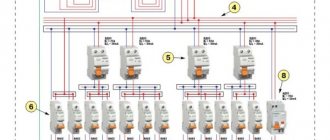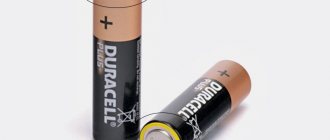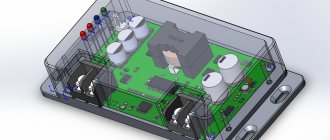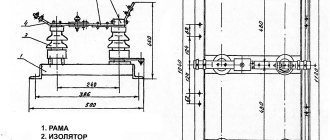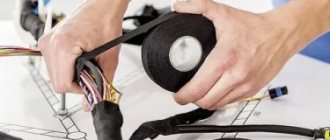AAA battery and its characteristics
Similar power sources are produced by many companies, but have common size standards. The differences relate to technical parameters, primarily chemical composition. There are disposable products and batteries that can be recharged multiple times.
Designation
Popularly, elements of this type are called little finger ones due to their small size. According to the international IEC marking, first there are letters indicating the chemical composition, then the number 03, which means the type. According to the ANSI/NEDA standard, the numbers 24 and a letter index are present.
Battery capacity and number of amps
Capacity refers to the energy charge of a battery that it is capable of delivering for some time when discharged. The unit of measurement is Ah (Ampere-hours). An element with a high capacitance is able to maintain the required voltage for a longer time.
The resource varies depending on the type of battery:
AAA battery capacity table.
- for saline - 540 mAh;
- for alkaline ones - 1200 mAh;
- for batteries an average of 1250 mAh.
This affects the capacity and service life of the batteries.
Battery voltage
This indicator is indicated on the body. The average value of disposable cells is 1.5 V. Some modifications have deviations upward - up to 1.6 V. For AAA batteries, the voltage is always standard - 1.25 V.
Size and weight
Little finger batteries have an elongated cylindrical shape. Diameter – 10.5 mm, length – 44.5 mm. Weight depends on the built-in electrode, ranging from 12-14 g.
Best before date
The parameter is indicated on the label. Shelf life should not be confused with service life. The last indicator depends on the device in which the element is used and the amount of mAh consumed.
Operating temperature range
Average values are -40…+60°С. The most frost-resistant are rechargeable nickel-cadmium batteries. Alkaline AAA operate in the range -30…+50°C. For salt cells, the current output drops significantly as the temperature decreases. Lithium-based cells do not tolerate high temperatures well. When heated, they can leak and even explode.
Difference from AA batteries
Pinky and AA batteries are similar in appearance. When viewed individually, it is sometimes difficult to distinguish which is which. The first thing you notice when comparing is the size. The finger elements are larger: diameter – 14.5 mm, length – 50-50.5 mm.
Dimensions affect capacitance at the same voltage. Finger elements work for a long time in children's toys and flashlights, which consume energy evenly. Used in pulse devices.
The batteries differ in capacity and diameter, but at the same time they are similar in appearance.
There are 2 types of AA batteries available: salt and alkaline. The first ones are a little lighter, up to 18 g, versus 24 g for the second ones. The capacity of alkaline AA batteries is almost equal to that of pinky NiMH batteries: 2900 mAh and 3000 mAh, respectively.
For AAA cells, the positive electrode has a protrusion at the end measuring ⅓ of the diameter. On the other side there is a flat or raised area of the negative terminal. Finger elements have a positive electrode 1 mm high and 5 mm in diameter. Negative – flat, 8 mm in diameter.
Facts about AAA batteries
Batteries of this type are usually classified as batteries having a length of 44.6 mm and a diameter of 10.5 mm. They weigh about 12 g. AAA batteries are informally called “pinky” batteries.
The batteries of the type in question have a voltage of 1.5 V. The batteries corresponding to their format are 1.25 V. The resource of AAA salt batteries reaches about 540 mAh. Capacity of alkaline batteries - up to 1200 mAh, nickel-metal hydride batteries - up to 1250 mAh.
Types of AAA batteries
In appearance, the batteries differ only in the company logos. The main indicator is the type of installed electrodes and anodes. They affect capacity, service life and cost. Disposable galvanic cells and rechargeable batteries are produced.
Salt
They belong to the earliest development and have remained virtually unchanged throughout production. Available for purchase at any retail outlet that sells electrical goods.
Unlike other AAA elements, they are inexpensive due to the use of cheap raw materials for production. This is zinc with cadmium, gallium, lead at the negative pole. The positive electrode is made of manganese dioxide with inclusions of electrolyte, acetylene black, and graphite.
The production of salt elements is gradually decreasing. In modern gadgets, their use is irrational and ineffective. They are suitable for many devices that do not require high self-discharge and voltage instability.
Other disadvantages include:
Salt batteries are suitable for many devices that do not require high self-discharge.
- the lowest energy consumption among other elements of size 03 – 540 mAh;
- serve on average 2 years;
- with a large discharge, the capacity immediately drops significantly;
- As the air temperature drops, activity approaches minimum.
Despite the disadvantages, salt batteries are in demand due to their low cost.
Alkaline or alkaline
These are elements that are average in price and operating time. In a potassium or manganese-zinc electrolyte, chemical reactions proceed faster and energy output is better. The capacity is 2 times higher compared to salt cells, reaching 1100 mAh. They have weak self-discharge.
The optimal price-quality ratio causes increased customer demand. They work in household appliances and electronics that consume little power. They are not suitable for equipment requiring surge voltage. They do not last long, but replacing them with new elements does not affect the budget.
Lithium
Lithium is used in the anode, the electrolyte comes in different types. These are the most powerful, long-lasting pinky batteries, which affects their price. They are used in devices where continuous or intermittent power supply is required. Such equipment includes cameras, video cameras and other modern gadgets.
AAA batteries
They are used in devices where it is possible to use disposable batteries of the same type. A special feature is the ability to recharge. Even though their price is much higher and the charger is purchased separately, the savings are noticeable.
The voltage of batteries is lower than that of batteries - 1.2 V, but they have a larger storage capacity.
Among such current sources, nickel with metal hydrides or cadmium - NiMH and NiCd, respectively, are in demand. For the former, care is required when recharging. If you violate the regime, the duration of service is limited.
Little finger batteries based on lithium have been developed: Li-pol, Li-ion.
Rechargeable batteries.
Pivot table
The most important information about AAA power supplies is presented in the table.
Batteries | Batteries | ||||
| Salt | Alkaline (alkaline) | Lithium | NiCd | NiMH | |
Marking (IEC standard) | R03 | LR03 | FR03 | KR03 | HR03 |
Capacity, mAh | 540 | 250/1200 | 1100 | 300/500 | 600/1250 |
Rated voltage, V | 1,55 | 1,5 | 1,5 | 1,25 | 1,25 |
Rechargeable | No | Can be used up to 50 times with proper use | No | Yes | |
Maximum service life, years | 3 | 7 | 10 | Depending on the intensity of use, manufacturer | |
Types and characteristics of AAA batteries
Batteries marked AAA have differences. It is worth paying attention to this, since the type of anode and electrode installed changes the operating time, capacity and, as a result, the cost.
For all little finger batteries, the positive electrode is a protrusion at the end of the product, while it occupies dimensions of about a third of the diameter (indicated by a plus on the body). The negative electrode is a flat or slightly raised area on the other end of the battery (indicated by a minus). The dimensions are also the same for all, the weight will differ due to different production technologies.
Salt batteries
AAA R03 salt batteries appeared first of all, and they are still produced almost unchanged.
Saline AAA R03
The active mass of the positive electrode consists of manganese dioxide with acetylene black, electrolyte or flake graphite. The negative electrode is made of stable zinc with the inclusion of cadmium, lead or gallium. Differences:
- low cost;
- availability and low cost of raw materials for production;
- Ease of use;
- acceptable parameters of voltage and energy intensity for most modern electrical appliances.
Salt batteries are available to consumers primarily due to their low cost. But manufacturers are gradually abandoning their release, and there are several types of arguments for this. The disadvantages of salt batteries include:
- high degree of self-discharge;
- short service life - approximately two years;
- if there is an increase in discharge currents, then the level of energy intensity is significantly reduced;
- minimal activity when the ambient temperature drops.
Due to these characteristics, it cannot be said that salt batteries are in demand. They are not suitable for new gadgets, devices that require constant supply of the same energy, as well as a low self-discharge rate.
The battery has standard dimensions of 10.5 by 44.5 millimeters. The energy capacity reaches 540 mAh, which is the lowest among other types.
Alkaline batteries
AAA LR03 alkaline batteries use a zinc manganese battery. The electrolyte is an alkaline solution, the anode is powdered zinc, and the cathode is manganese dioxide.
Saline AAA LR03
Alkaline pinky batteries are more energy efficient and can withstand lower temperatures. The specific power of such batteries reaches 150 kW. The EMF of the battery is standard - about 1.5 Volts. The operating temperature range is wide compared to salt batteries - from -30 to +55 degrees. The dimensions are also standard - 10.5 by 44.5 millimeters. The energy capacity is large - from 1000 to 1100 mAh.
Benefits of alkaline batteries:
- high degree of energy intensity;
- low self-discharge coefficient;
- Ease of use.
But at the same time, alkaline batteries do not have a long service life. They also do not work well if the device for which they are intended requires surge voltage (the explanation can be found in the instructions).
Lithium batteries
AAA FR03 lithium batteries use lithium as the anode, cathode, and the electrolyte can have many types. Distinctive features:
- long operating time;
- high price.
Lithium batteries have the highest capacity - up to 1300 mAh, voltage 1.5v.
Saline AAA FR03
They are the most optimal, as they work with devices that require power supply continuously or intermittently. But at the same time, their cost is significantly higher than others.
Popular manufacturers
There are dozens of manufacturers in the world, and all products are of high quality. The brands in the rating include Alkaline, Turbo max, Energy, Robiton, Minamoto.
Testing for operating time in minutes at the same load revealed the leaders:
Duracell ultrapower lasts 61 minutes of continuous use when tested.
- Duracell ultrapower – 61;
- GP – 56;
- “Trophy” – 53;
- Energizer – 44;
- Kodak – 40.
In terms of price-quality ratio, the most advantageous model is from.
Table
| AA batteries | AAA batteries |
| What do they have in common? | |
| Same voltage - about 1.5 V, use of the same types of electrolytes in the design | |
| What is the difference between them? | |
| They have a diameter of 13.5-14.5 mm, length - 50.5 mm | They have a diameter of 10.5 mm, length - 44.6 mm |
| They have a capacity of up to 2980 mAh, batteries - up to 3000 mAh | They have a capacity of up to 1200 mAh, batteries - up to 1250 mAh |
Types of AA and AAA batteries: Ni-Cd, Ni-MH, Li-Ion
According to the chemical composition, AA and AAA batteries are divided into the following types:
- Nickel-cadmium (Ni-Cd).
- Nickel metal hydride (Ni-MH).
- Lithium-ion (Li-Ion).
- Nickel-cadmium AA/AAA batteries are characterized by a relatively small capacity. They have a “memory effect” - a decrease in actual capacity due to incomplete discharge before the charging process begins. If the seal of the housing is broken, Ni-Cd batteries are toxic, so they are not environmentally friendly.
- Ni-MH batteries AA and AAA differ from Ni-Cd in their increased capacity, are environmentally friendly, and are less susceptible to memory effect. Currently, nickel-metal hydride elements have replaced nickel-cadmium elements almost everywhere.
- Lithium-ion batteries AA Li-Ion 1.5v contain two devices in one case: a lithium rechargeable battery with a voltage of 3.7v and a converter from 3.7 Volts to 1.5 Volts. Such Li-Ion batteries are produced specifically to replace AA and AAA 1.5v batteries and are characterized by the absence of memory effect.
Li-Ion battery AA 1.5v Fenix with USB port for charging.
AAA battery is it finger or pinky?
The AAA battery is a pinky battery. Often, pinky and finger batteries are confused with each other due to their similar appearance.
Comparison of AAA and AA
AA batteries are slightly larger. On average, the length and diameter range from 14.5 millimeters, and the length from 50 to 50.5 millimeters. Little fingers are slightly smaller in size. In particular, their average diameter is about 10.5 millimeters, and their length does not exceed 44.5 millimeters. Weight about 14 grams. It is quite easy to confuse them in a store if a person is not an expert.
For an AAA battery, the positive electrode is a protrusion at the end of the product, and it occupies about a third of the diameter. The negative electrode is a flat or slightly raised area at the other end of the battery.
The batteries are protected against corrosion and short circuit. In particular, it is provided for this that the device is placed in a metal or plastic housing. Also protected is the insulation from the cylindrical electrode (positive for alkaline batteries and negative for salt batteries).
| Designation | A.A. | AAA |
| Labeling of salts | R6 | R03 |
| Alkaline labeling | LR6 | LR03 |
| Lithium marking | FR6 | FR03 |
| Height, mm | 50,5 | 44,5 |
| Diameter, mm | 14,5 | 10,5 |
| MIN capacity, mAh | 1100 | 540 |
| MAX capacity, mAh | 3500 | 1300 |
| Voltage, V | 1,5 | 1,5 |
Important! Attention should be paid to the product labeling to avoid later difficulties with returning or exchanging products.


